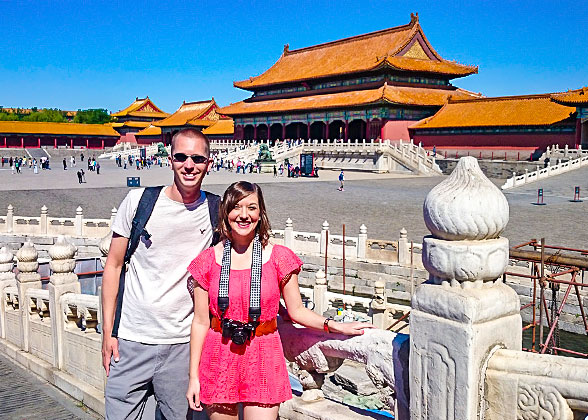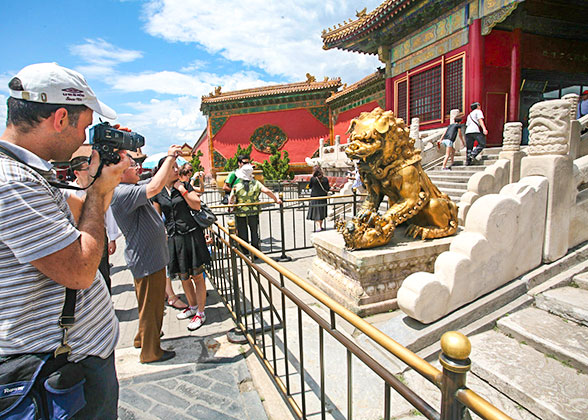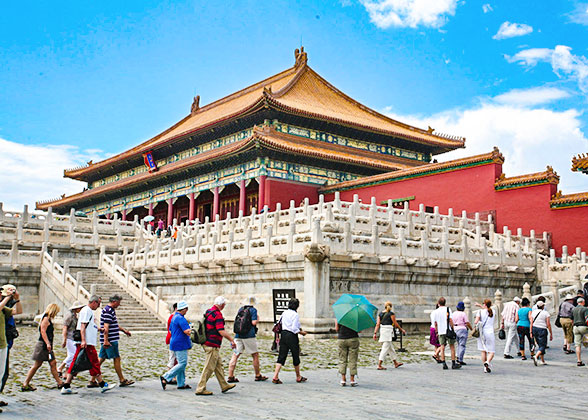Forbidden City's Bureaucrat Hinders Post-Pandemic Tourism Boom
Forbidden City, a UNESCO World Heritage Site and a landmark of China, is becoming an unattainable site on the travel list of more and more visitors. That’s because it’s more and more challenging to acquire an entry ticket. Every day, only 30,000 tickets are issued but the number of interested visitors is far beyond.
Actually last year in the summer holiday from July to August and during some public holidays like Chinese National Day, it had not been an easy thing to reserve the tickets smoothly. But the authority did nothing to improve the situation. Coming to 2024, the situation gets even worse. It’s quite common the tickets are sold out in seconds after being released. Failing in visiting the grand royal palace, many tourists had left Beijing with great regret.
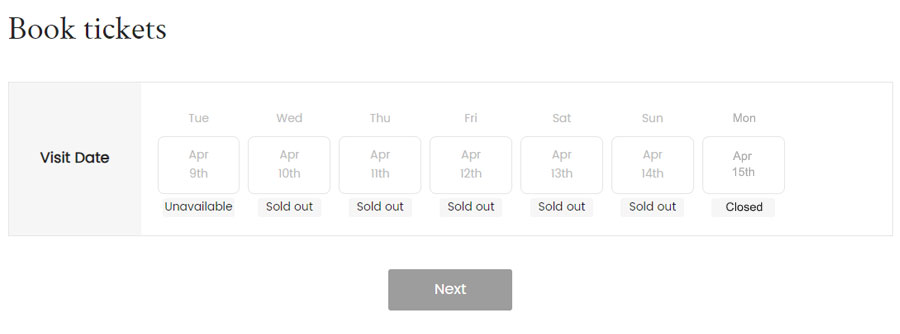 |
| The official webpage shows no ticket is available for the follwing 7 days. (Screenshot on April 9, 2024) |
Actually last year in the summer holiday from July to August and during some public holidays like Chinese National Day, it had not been an easy thing to reserve the tickets smoothly. But the authority did nothing to improve the situation. Coming to 2024, the situation gets even worse. It’s quite common the tickets are sold out in seconds after being released. Failing in visiting the grand royal palace, many tourists had left Beijing with great regret.
During the past Qingming Festival in this early April, Daniel, a foreign student from Beijing Jiaotong University, planned to visit the Forbidden City with his friends. They logged into the official WeChat mini program minutes before the tickets were available and started to click the book button crazily once it hit the clock, but no one succeeded.
Daniel’s classmate, Jeff was lucky to get one, after keeping refreshing the page every a few seconds for 4 hours.
Liu Wen from a Chinese travel agency said: “Every night before 20:00 (except Monday when no ticket is released), I have to sit before the computer, ready to grab the tickets for my customers. If lucky, I can get some in about 10 minutes. After that, I need to click the button every now and then to see if there is any left. It has happened many times this year I failed and had to ask my customers to reschedule or even cancel the visit. Some of the customers logged complains for that although it was not my fault :(”
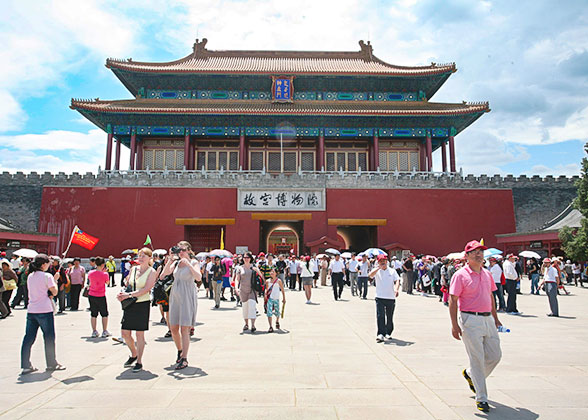 | 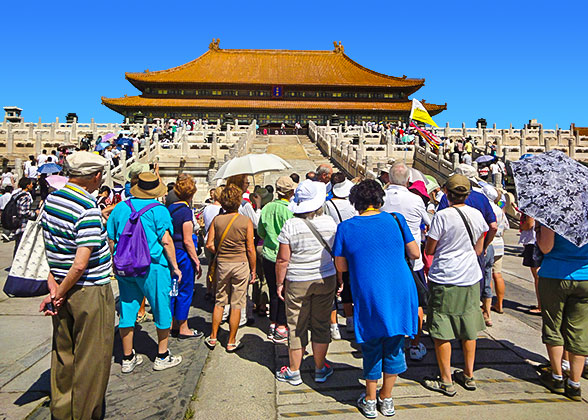 |
Is it really because of the “Limited Tourists” policy or others?
It’s not wrong to adopt the “limited tourists” policy to better protect the historical site. Many world-famous scenic spots also conduct it, like Terracotta Army in Xi’an and Great Wall at Badaling and Mutianyu. But no other sites bring tourists so much inconvenience like the Forbidden City do.
Before the outbreak of covid-19 epidemic, at most 80,000 visitors were allowed each day to enter the Forbidden City. During the epidemic period, only 30,000 tickets were issued at most daily. Now, it has been more than one year since China lifted the ban, but the “maximum tickets of 30,000 per day” has not been changed. Do the officials neglect the enthusiasm of the visitors or is it just because of their laziness?
It hinders China’s post-pandemic tourism boom.
Let’s see some statistics:
| 2019 | 2023 | |
|---|---|---|
| Beijing | ||
| Yearly Visitors | 322 million | 329 million ↑ |
| Yearly Inbound Visitors | 3,769,000 | 1,168,000 ↓ |
| Forbidden City | ||
| Tickets Available Daily | 80,000 | 30,000 |
| Yearly Visitors | 19,336,275 | Not published, but no more than 9,390,000 ↓ |
| Average Daily Visitors | 61,777 | Not published, but no more than 30,000 ↓ |
From the above chart, we can tell that China inbound tourism is still in a low level. For overseas tourists, a visit to China without the Forbidden City is definitely a bad experience.
If the Forbidden City opens its door more widely, more inbound visitors should be attracted to Beijing and China. However, the current situation is, according to quite a few travel agencies, many visitors have cancelled or delayed their visit to Beijing and even China after failing in getting the ticket, but turned to other East Asia countries like Japan or Southeast Asia like Taiwan. Is the Forbidden City doing this on purpose that "guiding" overseas tourists to visit the Taipei National Palace Museum before coming to Beijing?
Such a policy of "limited tourists of 30,000 per day" by the Forbidden City has become a stumbling block to the recovery of China tourism after the pandemic. Isn’t it similar to the "close-country" policy of the Qing Dynasty (1644 - 1911)? But please know that it has been over 100 years the Qing Dynasty fell and nearly 50 years China carried out the opening-up policy. Sadly, the door of the Forbidden City has not been truly opened.
The Forbidden City is the common wealth of all people and should be open to all. The simple and cruel rejection of visitors reveals the laziness and condescending attitude of the managers.
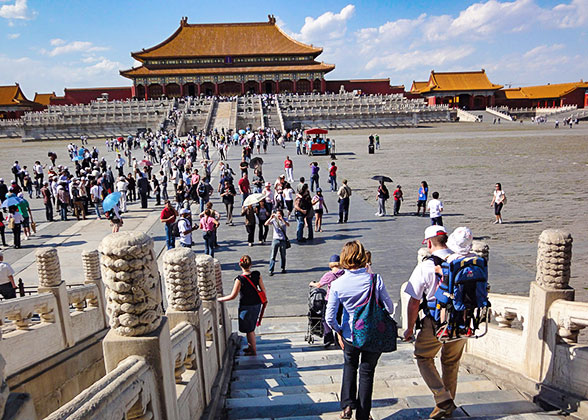 | 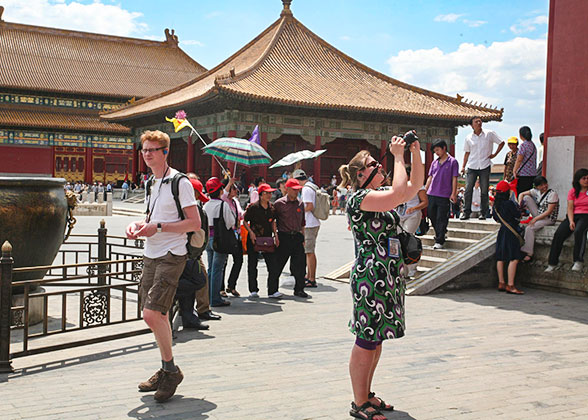 |
The laziness and bureaucracy are not only reflected on the “limited tourists of 30,000 per day”, but also on their unfriendly booking system.
Unfriendly Booking System of the Forbidden City
1. It releases the tickets at 20:00 and 7 days ahead of the visit. For some foreign visitors, it’s their midnight and sleep time. Why not release the tickets in several time slots to better serve world-wide visitors?
2. The official webpage and WeChat mini program are always stuck at around 20:00 when tons of visitors are booking at the same time. Again, why not release the tickets in several time slots and why not optimize the system?
3. The official WeChat mini program has only Chinese version. For English version, overseas visitors can only log into the webpage, which means they must have a computer at hand.
4. There is no Waitlist Function. Once failing in getting the ticket, one has to renew the page time to time to try their luck. Introducing the function, once someone cancels the booking, the system can automatically grab the ticket for those in the waitlist, saving a lot of trouble.
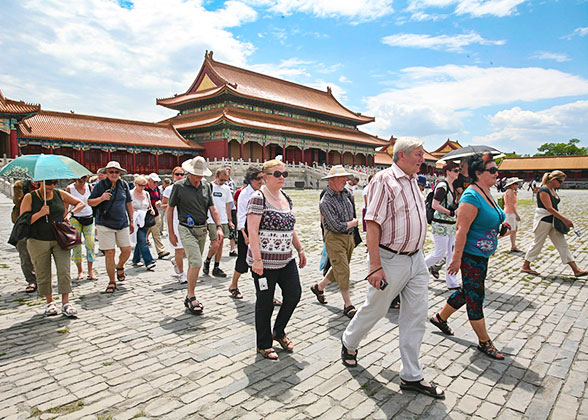 | 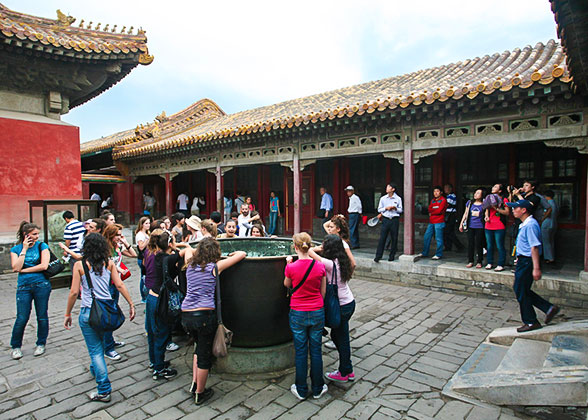 |
There should be some measures to meet the needs of more visitors.
1. Resume the daily maximum visitors of 80,000
This is the most urgent and currently the most effective solution. It is more a question whether the managers want it or not.
2. Cancel Closing on Every Monday and Open All Year Round
Let’s take the Terracotta Army, also a historical site and a UNESCO World Heritage Site for a comparison. The Forbidden City is closed every Monday for renovation while the Terracotta Army Museum opens all year round.
If it’s large-scale renovation, do it area by area, thus tourists always have some other palaces to visit.
3. Open at Night Accordingly
If being afraid of catching a fire, add more fire-fighting equipment and even keep the firemen as standbys, just like the security men.
Take a step back, if it’s not possible to open all the areas at night, just open some most popular areas, like Simatai Great Wall do, where only the section between East 5th Tower and East 6th Tower is open at night.
In fact, the Forbidden City was once open for night visit, on February 19 and 20 in 2019 during Chinese Lantern Festival, which proves that the solution is not impractical.
You May Like
- Last updated on Aug. 16, 2024 by Gabby Li -

